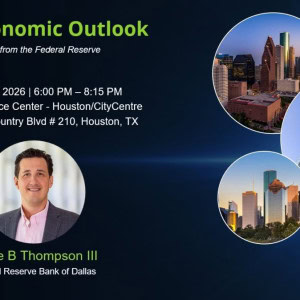
Register now for Clean Energy Investment Summit October 8 – October 9, 2024 – Houston
This Event Reminder is Sponsored by:
Join Leading Investors as They Analyze Opportunities & Share Strategies to Profit from the Clean Energy Transition
While the IRA, IIJA, CHIPs Act, the LPO program, and other DOE funds provided a tremendous injection of public money into clean energy investment in the U.S., the changes were so far-reaching that it required many months of work and clarification of issues to come to grips with the opportunities and risks involved in the new, greatly expanded range of potential investments. Leading investors did their homework, analyzing a host of rapidly-evolving market, financial, macroeconomic, political and technological developments, and have developed more focused investment strategies across the expanded range of technologies and asset classes clamoring for capital.
Infocast has organized this remarkable event to share the views of these leading investors regarding the comparative risks and opportunities represented by solar and wind platforms, energy storage, green hydrogen, carbon capture, EV infrastructure, domestic manufacturing, geothermal, RNG, and alternative fuels. They will also share their views on how a variety of related factors, including recent developments in financing markets for clean energy, key policy decisions, legal interpretations and tax guidance, and the macroeconomic and political outlook have affected their investment strategies.
This is a unique opportunity for investors and those seeking capital for their projects to understand the perspectives of the country’s leading investors and other key stakeholders in the clean energy space, and to meet and network with both capital providers and energy project sponsors. Please review our list of faculty members and our agenda and reserve your place today.
- Get up-to-the-minute briefings on how investors weigh the opportunities and challenges associated with solar and wind platforms, energy storage, green hydrogen, carbon capture, EV infrastructure, domestic manufacturing, geothermal, RNG and alternative fuels
- Understand the impacts on investment strategies of today’s macroeconomic trends and the upcoming elections
- Hear investors lay out their appetites for various financing options: debt market, tax equity market, tax credit transfer market, and the sponsor market
- Receive up-to-the-minute updates on key policy decisions and legal interpretations, including IRS guidance on IRA incentives, as well as the development of new financial structures to more effectively utilize tax incentives and increase potential profits
- Learn how the money from the IRA, IIJA, CHIPs Act, the LPO program and other DOE funds are impacting private capital strategies and affecting investor comfort levels in the various assets
8:45-9:45
Summit Day 1
Registration and Networking Breakfast
Infocast Welcome
Opening Remarks by Summit Chair
Dino Barajas, Partner and Global Chair of Project Finance Practice Group, BAKER BOTTS
Panel Discussion: Investment Strategies for Today’s Economy & Politics
Investors in the new clean energy asset classes that have emerged must first take into account the current inflation and interest rate environment, a completely new set of tax credits and incentives, changing IRS guidance, geopolitical unease, and the implications of the upcoming election. Investors need to understand the full spectrum of these risks and optimize where they place their capital. This session will discuss the macroeconomics affecting investment capital and deployment, and how investors are strategizing given the current environment.
- How might the US election affect investment or the Federal commitments, incentives, andfunding supporting clean technologies? Are Ukraine and Israel causing concern, what aboutChina and tariffs? Defaults by firms with too much debt? Are recession fears a factor?
- How are PE deals adapting to higher interest rate s, and what new innovative deal structuresand financings are emerging? PE-backed vs. VC-backed vs. other funding mechanisms: Isanything in the way of new capital deployment? Are public private partnerships on the rise?
- 2023 private credit influx, hard year for capital raise: How does private credit look today, what about when interest rates go down (and when might that happen)? How does thisaffect PE and other infra investors looking at deals?
- Familiarity with new technologies and handling depreciation: What new questions must beanswered surrounding tax risk and technology risk? What are the time horizons onpredictability of future earnings? Is there a lot of powder on the sidelines?
- ESG backlash: Is it slowing growth? Or is ESG continuing to drive infrastructure investmentsand/or corporate tax equity investments? Is ESG being rebranded? Moderator:David Haug, Chief Executive Officer, BILDMORE CLEAN ENERGY
Panelists:
Saurabh Anand, Managing Director, THE CARLYLE GROUP
Amanda Li, Chief Operating Officer and Co-Founder, BANYAN INFRASTRUCTURE Ivan Ponieman, Principal, I SQUARED CAPITAL
9:45-10:30
Nicholas Sorenson, Associate Director, IGNEO INFRASTRUCTURE PARTNERS
Dave Stangis, Partner, Chief Sustainability Officer, APOLLO GLOBAL MANAGEMENT INC
Panel Discussion: Investor Perspectives on Evaluating Emerging Asset Classes
Despite the new potentially lucrative opportunities emerging in clean energy infrastructure, comparing assets with completely different underlying technologies, revenue streams, business models, and even end products can be difficult. The cost of capital is stabilized but still high, so each decision needs to be weighed carefully. In this session a group of top investors will compare these technologies, discuss the risks and rewards, and examine the potential impacts on their investment portfolios.
- How do investors assess risk/return when taking on technology risk? Is 2024 looking up?
- Say no to binary risks: How are investors approaching the different asset capital needs,business models, and revenue streams? What about capacity, geography, investment size?Does comparing assets lead to a more tailored decision?
- What percentage of investors’ portfolios are in solar/wind compared to the other assetclasses, and how do they see that mix changing over the next 3, 5, 10 years?
- How do commodity prices, interest rates, and inflation factor in decision-making? Are costs more concerning for some technologies? What about technologies with clear, workable IRSguidance compared to those without, like hydrogen? Has diligence changed?
- What does investment competition look like in the different assets, and is less competitionfor new technology a recipe for higher returns? Are investors looking at climate risks, and what data is useful to de-risk investment in new asset classes?Moderator:
Zak Bentley, Americas Editor, Infrastructure Investor, PEIPanelists:
Vikram Dhawan, Director, EQT PARTNERS
Ashlynn Horras, Principal, KHASMA CAPITAL
Prashant Mupparapu, Investments and Asset Finance, PEACHTREE INFRASTRUCTURE Li Xu, Managing Partner, LXI CAPITALNetworking Break
Presentation: IRS Update on IRA Tax Guidance Presenter:
Lelah L. Martinez, Senior Stakeholder Liaison, INTERNAL REVENUE SERVICE
Panel Discussion: Implications of Tax Equity & Transferability Markets: Certainty & Risks
One of the biggest uncertainties in clean energy investment today is a lack of clarity about IRA rules. There’s a lot of noise in the market, stalling some projects. At the same time, the transferability market is growing faster than expected. How are investors operating as rules continue to be clarified, and how are both traditional tax equity (TE) and transfer deals looking today? In this session top TE experts will discuss the ins and outs of the TE and transfer markets, highlighting how recent changes are affecting revenue streams of clean energy infrastructure deals, and how valuation is happening on the project, portfolio, and platform level.
11:30-12:30
For Speaking Opportunities, Contact:
2:15-3:15
- What’s the size of both the traditional TE and transfer markets today? What are TE investors expecting in terms of returns in today’s economy? How are credits affecting valuations?
- How do TE investors see emerging assets? Are t-flips and other structures creating moreopportunities for more types of deals, and what deal trends are emerging?
- Word of the day: Transferability. What assets are benefitting the most from these dealsnow, and how is this likely to shift as the market matures?
- Is transferability the gateway drug for corporates interested in TE, and what structures,prices, and diligence are being seen in transfer deals? What risks are sticking points?
- IRS guidance: What questions remain, and how are deals adapting? Is domestic content a worry? What’s happening with 45V? How aggressive is 48C? What’s the timeline on clarityfor this? Are direct pay deals happening, where and with what technologies? Moderator:Heather Cooper, Partner, MCDERMOTT WILL & EMERY
Panelists:
Sheldon Elefant, Partner, BIRCH RISK ADVISORS
Omer Farooq, Managing Director, Global Sustainable Finance Group, BANK OF AMERICA David Haug, Chief Executive Officer, BILDMORE CLEAN ENERGY
Jorge Iragorri, Managing Director, Head of Renewable Energy Investments, MORGAN STANLEY Corey Lewis, Managing Director, Transaction Solutions, AONGroup Luncheon
Presentation: LPO Funding Presenter:
Stuart Page, Senior Consultant, LOAN PROGRAMS OFFICE, U.S. DEPARTMENT OF ENERGY
Panel Discussion: New Developments in Corporate Level Financing/Debt
Many platforms are now too big to do whole-company transactions in the private market, and big platforms are currently doing capital raises. Infra fundraising was reported to be down in 2023 to an 8-year low, with interest rate hikes and a focus on AI stocks, however many major infra funds are doing massive raises. Investing in expertise is still attractive and a lot of capital wants to back strong management teams. In an increasingly competitive market for assets, how do investors access the best deals? This session will discuss how investors keep their competitive advantage and access the best deals given today’s platform sizes and needs.
- Shakeout period: How are recently acquired development platforms working out theirbusiness plans, and is there a slowdown in platform M&A activity?
- Does infra debt have a comparative advantage to equity in light of the current economicconditions and global volatility? Preferred equity in capital stacks? How do today’s highinterest rates factor in, and what signals is the Fed giving?
- Portfolio level financing and cross-collateralization: is more diversified risk leading to largerloans? What’s the role of TE and transfer markets in assessing potential returns?
- Infra funds have $200B looking for a home: Is leverage likely to happen on the investmentside or debt side? Is some of this available to take companies public?
For Speaking Opportunities, Contact:
Victoria Hoefler | Conference Producer | VictoriaH@infocastevents.com | 747-218-5590
3:15-3:45
• Where can PE funds get 12% to 16% returns in today’s markets? Moderator:
Dino Barajas, Partner and Global Chair of Project Finance Practice Group, BAKER BOTTS
Panelists:
Erich Heintzen, Director, KKR
Mark Liu, Principal, I SQUARED CAPITAL Sarosh G. Nentin, Director, BLACKROCK
Presentation: Investing Alongside OCED
The DOE Office of Clean Energy Demonstrations (OCED) is a $25B+ multi-technology office with demonstration scale projects that include a suite of decarbonization pathways. As of September, OCED has selected $20 billion worth of projects, that will be seeking up to $70 billion in private sector cost share.
Presenter:
Maressa Brennan, Portfolio Strategy, OFFICE OF CLEAN ENERGY DEMONSTRATIONS, U.S. DEPARTMENT OF ENERGY
Networking Break
Panel Discussion: What is the Monetization Outlook for Emerging Decarbonizing Technologies? The energy industry needs more than wind and solar to both reach decarbonization goals and have a stable grid, which is supercharging investment in many other types of assets. While the traditional solar and wind markets are robust and relatively understandable, the same cannot be said for emerging technologies. In this session stakeholders in different decarbonizing asset classes and technologies will discuss the comparative markets, capital needs, and timelines to ascertain how these very different assets with very different capital needs and business models compare to one another.
- IRA and IRS: How does guidance influence the financeability of projects and pipelines, and what affect does good/bad guidance outcomes have on both a company’s outlook and the overall market outlook for these technologies? What about exit strategies?
- What are the offtake market options for each of these assets, who are the offtakers, and what are the timelines for deployment? Are hy hubs moving forward despite 45V?
- What is driving new market growth, and what needs to happen for these markets to be robust enough for more certain revenue streams? Is 45Z moving the clean fuels market?
- What will infrastructure investors need to do differently to protect the strengths of the asset classes? Is infratech an infrastructure play or is it best to play in the PE space or debt?
- How does insurance impact CCS, RNG, and hydrogen projects and outlooks? What about credit transferability, are there certain asset classes benefitting more than others?
3:45-4:15 4:15-5:15
For Speaking Opportunities, Contact:
Victoria Hoefler | Conference Producer | VictoriaH@infocastevents.com | 747-218-5590
5:15-6:15
7:30-8:30 8:30-8:35 8:35-8:45
8:45-9:45
Networking Reception
Moderator:
Matthew Boms, Executive Director, TEXAS ADVANCED ENERGY BUSINESS ALLIANCE
Panelists:
Vikas Bharathwaaj, Managing Director, MORGAN STANLEY
Duncan Bourgoin, Senior Vice President, FORTISTAR
David Hirsch, Principal, Investments, GENERATE CAPITAL
Josh Kaufman, Chief Executive Officer and Co-founder, KHASMA CAPITAL
Divya Singh, Portfolio Risk Management, OFFICE OF CLEAN ENERGY DEMONSTRATIONS, U.S. DEPARTMENT OF ENERGY
Wednesday, October 9, 2024
Summit Day 2
Registration and Networking Breakfast
Infocast Welcome
Opening Remarks by Summit Chair
Dino Barajas, Partner and Global Chair of Project Finance Practice Group, BAKER BOTTS
Panel Discussion: Opportunities in Solar & Wind Platforms & Portfolios of Projects
Despite potentially bloated valuations, inflation, and rising capital costs, investors don’t see the renewables market slowing down. The IRA accelerated investment in solar and wind even with high interest rates, pricing uncertainty, and economic volatility. This session will assess the landscape at the company, pipeline, and portfolio level, discuss the changed the risk/reward profile on financing assets wrapped into portfolios and what goes into buying and selling them, and make predictions for the coming year.
- Asset M&A amazing, platform M&A lackluster(?): Is the platform M&A market gaining, andwhat’s the 2025 outlook? Is securing expertise with a pipeline realizing the most value?
- Were deals in 2023/4 successful or inflated, and are investors hitting returns vsexpectations? What’s driving buyer/seller behavior? What risks/returns are feasible?
- What’s enticing investment: platforms doing utility-scale, or portfolios of C&I, communitysolar, residential? Did the IRA change these assessments? A diversified approach?
- Is ESG changing valuations and decisions? What about inflation? How is the IRA influencingdecision-making in investments? Offtake appetites and PPA pricing?
- What’s the portfolio diversification ratio today, and how might that change in the future? Isthe IRA influencing valuation? What kind of terms are you seeing Moderator:Matthew Nesburn, Partner, A&O SHEARMAN
For Speaking Opportunities, Contact:
9:45-10:45
Panelists:
Gabriel Alonso, Founder & Chief Executive Officer, 547 ENERGY
Josh Castillo, Partner and Chief Investment Officer, Infrastructure, ACCELERATE
Akshat Kasliwal, Infrastructure Strategy & Transaction Advisor, PA CONSULTING GROUP Supria Ranade, Head of Power Markets, SB ENERGY
Panel Discussion: Opportunities in Storage: Technology, Revenue Models & Financing
Storage continues to be the biggest opportunity in clean energy investment, as the IRA’s credits completely changed the game for all types: standalone, co-located, long duration, chemistries and technologies galore. Investment in storage equipment and development companies is skyrocketing even as costs and regional RTO/ISO market rules are slowing development in some areas. Investors need to understand all technologies as their relative price advantages keep shifting and demand outpaces supply, particularly for lithium. This panel will examine the storage market today and the innovations in technology and financing driving future growth.
- Storage is booming in CA and TX, but what’s the pace of storage deployment in otherregions? Have deployment approaches or company strategies shifted post-IRA?
- What are the business models and use cases moving forward today? What are the capitalneeds? How are financings incorporating ITCs and what percentage of deals are standalone?
- Lithium supply: Is the EVs vs. BESS issue making other chemistries more attractive toinvestors? Is lithium a long-term supply cost risk for the next 5-10 years?
- What new long-duration battery chemistries and technologies are in the market today, andwhat’s on the horizon?
- The ITC and other credits: How are credits being handled in deals, valuations, and inoverarching business strategies? Moderator:John Davies, Chief Executive Officer and Chairman, DAVIES
Panelists:
Adam Briggs, Chief Commercial Officer, AMBRI INC.
Karl Brutsaert, Vice President, Development & Origination, SB ENERGY
Sean T. Long, Sr., Co-Founder and Chief Executive Officer, POWERTRANSITIONS Marco Terruzzin, Chief Commercial and Product Officer, ENERGY VAULTNetworking Break
Panel Discussion: Opportunities in Hydrogen Markets, Project Deployment & 45V
Hydrogen has the potential to become one of the bigger technological opportunities, but there is concern over just how much 45V is impacting investment in deals this year, with the guidance as written making some projects uneconomical. The way the credits are structured under the
IRA has become a stumbling block: When will revisions come out now that comments are over, and will they turn out favorably? This session will discuss 45V guidance, the volatility of pricing, and what markets Hy is likely to work out in.
- 45V guidance has been delayed: How credits are structured and what’s allowed undercurrent guidance is negatively impacting the industry, are lawsuits in the cards?
- What do investors need to know about the technology, and when does hydrogen pencil, andwhat are the current investment sizes and capital needs?
10:45-11:15 11:15-12:00
For Speaking Opportunities, Contact:
12:00-1:15 1:15-2:00
- Hubs: What’s the progress so far, how big is the potential market size, and what are the operational timelines? Are LCFS credits enough, or are other revenue streams needed?
- DOE, IIJA, and IRA: How are they giving hydrogen a boost, and what are the implications of the CHPTC tax credits? Can/will private investors fill in the gaps? What about O&G?
- Transferability: How is hy benefitting, and what’s the appetite? How might 45V change this?Panelists:
Stephen Brooks, Commercial Vice President, LONE CYPRESS ENERGY SERVICES Omar Karar, Vice President of Finance, APEX CLEAN ENERGY
Joao Nicolau, H2 Investment Director, EDP RENEWABLES
Erika Taugher, Director of Green Fuels, Business Development, PATTERN ENERGYGroup LuncheonPanel Discussion: Opportunities in US Manufacturing: How Big, How Fast? Investment in domestic manufacturing facilities has ballooned post-IRA, IIJA, and CHIPs, and the market has room for more with the increase in demand for solar, wind, and other clean energy asset components along with new domestic content requirements. Domestic manufacturing should increase, but it will take time: 45X MPTC guidance is still being worked out, particularly for the battery storage industry. It is unclear how some of the key incentives will work, whether timelines for equipment will meet demand, and what types of facilities are best poised to have a substantial rate of return.
- What progress is being made, what are the timelines to facilities being finished, and how aredevelopers working with manufacturers to speed efforts to bring facilities online?
- What questions remain about the guidance that has already been released? Are IRAguidelines clear and workable? Are state incentives making some areas more attractive?
- What’s most attractive to investors: solar and wind components, inverters, qualifyingbattery components, applicable critical minerals? Are credit calculations, recordkeeping andreporting requirements clear? What’s the market, and how big can it all really get?
- Are domestic content requirements being factored into raw material/component sourcingfor facilities planned or under construction? How are these requirements shaping deals?
- How are people getting comfortable doing transactions? What role do global clean energysupply chain issues and plans play in US manufacturing project valuations? Moderator:Carl Cho, Director, Fund Advisor, CITI
Panelists:
Hari Achuthan, Founder, President & Chief Executive Officer, CONVALT ENERGY, INC Jeffrey Juger, Deputy General Manager, JINKOSOLAR (U.S.) INC.
Andrew Worden, Chief Executive Officer, GAMECHANGE SOLARPresentation: Geothermal Case Study Presenter:
Paul Sabbagh, Director, Structured Finance, FERVO ENERGY
2:00-2:30
For Speaking Opportunities, Contact:
2:30-3:15
Panel Discussion: Opportunities in EV Infrastructure Models & Revenue Streams
The IRA and Infrastructure Law continue to push money into the EV space, with $110B for transportation infrastructure and $7.5B for EV charging technology; however, EV sales numbers and stock prices are sending mixed messages, while batteries in frozen vehicles have become a concern for consumers. This session will cover the EV infrastructure landscape, the effects of Federal funding and commitments on generation-side economics, IRS EV tax guidance, materials costs, and how all this is affecting financing and revenue assumptions.
- Chicken and egg: Is adoption happening fast enough to support infra investment, and is theEV charging infra out there creating more EV adopters? What’s the real holdup?
- What are the capital needs and revenue models for EV charging infrastructure? How does the IRA’s domestic manufacturing affect EV infra and material supplies? Are costs going torise further? How are risks and potential returns being calculated?
- Who is funding these projects, and what types of investment approaches are movingforward with IRA credits? How is Federal and state funding being dispersed?
- EV charging and energy storage: Is offsetting demand charges creating a new revenuestream? If so, how does this idea go from concept to real-world revenue? Moderator:Lawrence (Larry) Goldenhersh, President, Center for Sustainable Energy (CSE)
Panelists:
Gabe Cuadra, Principal, POWERHOUSE VENTURES
Jay Hudson, Director of Fleet Sales, BLINK CHARGING
Chris King, Senior Vice President, eMobility Strategic Partnerships and Strategic Initiatives, SIEMENS
Gustavo Occhiuzzo, Chief Executive Officer, EVCS
Wyatt Toolson, Co-Founder and Head of Capital Markets, EV REALTYNetworking Break
Panel Discussion: Opportunities in Carbon Capture: From Concept to Reality
Despite the complexities and costs, carbon capture is one of the biggest emerging opportunities. While the IRA minimized barriers to investment and increased tax credits for CCUS projects under Section 45Q, complexities and costs are barriers to more widespread adoption; however, once the guidance is cleared up, the lucrative opportunities are still there . In this panel, leading developers share their experiences in pushing projects forward, successful funding strategies, and what’s on the horizon.
- IRA: Are the newer begun construction, annual capture requirements, and 5-year direct payprovisions changing calculations? What about 45V? Is it having the same effect as hy?
- What are CCS/CCUS capital needs, and where do developers and investors seeopportunities? What’s holding back large-scale carbon capture, and are there challengesthat may make investors think twice? What about club and syndication deals?
- TE and transfer: What’s needed to develop, finance, and structure CCUS projects? Does recapture make new projects more attractive to energy producers and carbon-intensiveindustries? How does CC affect O&G, LNG?
- What’s the best way to manage Carbon Offset Credits, costs, and co-benefits?
3:15-3:45 3:45-4:30
For Speaking Opportunities, Contact:
• Insurance for CC projects: what’s available, what’s needed, and what’s the cost?
Panelists:
Joey Bernica, Director – Growth Equity, CLIMATE INVESTMENT
Chris Davis, Senior Vice President, MILESTONE CARBON, LLC
Brett Henkel, Co-Founder and Senior Vice President, Business Development, SVANTE TECHNOLOGIES INC
Alex Tiller, Chief Executive Officer, CARBONVERT
4:30-5:15 Panel Discussion: Opportunities in RNG & Alt Fuels
Demand for renewable natural gas (RNG) and other alternative fuels continues to grow, with estimates that the RNG market will scale to $4B in production by 2030. Investment is up, as major companies continue to acquire RNG and Alt Fuels developers, and utility operators are investing in RNG projects through both unregulated subsidiaries and regulated gas distribution companies. This session will bring together investors and developers to discuss what it will take to fund these capital-intensive projects given the spending boom and the raft of new subsidies, including what’s driving the industry, price volatility and project costs, the expected production capacity for the coming year, and the challenges to scale up commercialization.
- What are investors looking for in projects and portfolios? Alternatively, what financingavenues are developers pursuing? How difficult is it to find capital today?
- How are PPAs, alternative revenue models, tax equity, and the capital markets affected byIRS guidance and the IRA’s implementation? How are RINs, the ITC, and other tax creditsimpacting RNG and Alt Fuel valuations? What about investor competition?
- How is the economic landscape impacting price volatility and project costs? Are rising costsrelated to feedstock supply impacting investment decisions? What strategies are beingemployed to reduce these costs to mitigate the impact on revenues?
- What’s the expected production capacity for the coming year? What are the barriershindering scale-up? How do cap-and-trade and feed-in-tariffs impact income streams?
- Which regions are currently offering the best opportunities, and what will revenue streamslook like in the future? Moderator:Scott Chabina, Founder and Chief Executive Officer, CHABINA ENERGY PARTNERS
Panelists:
Christopher Efird, Chairperson and Chief Executive Officer, NXTCLEAN FUELS, INC. Gene Gebolys, Chief Executive Officer, WORLD ENERGY
Stephen Johnson, Founder & Chief Executive Officer, ILLINOIS CLEAN FUELS
Brian Tracey, Director of Gas Sales, VANGUARD RENEWABLES
Victor Vun, Senior Director – Investments, Fuels, Transportation and Nature, HASI
5:15 Summit Adjourns







Recent Comments